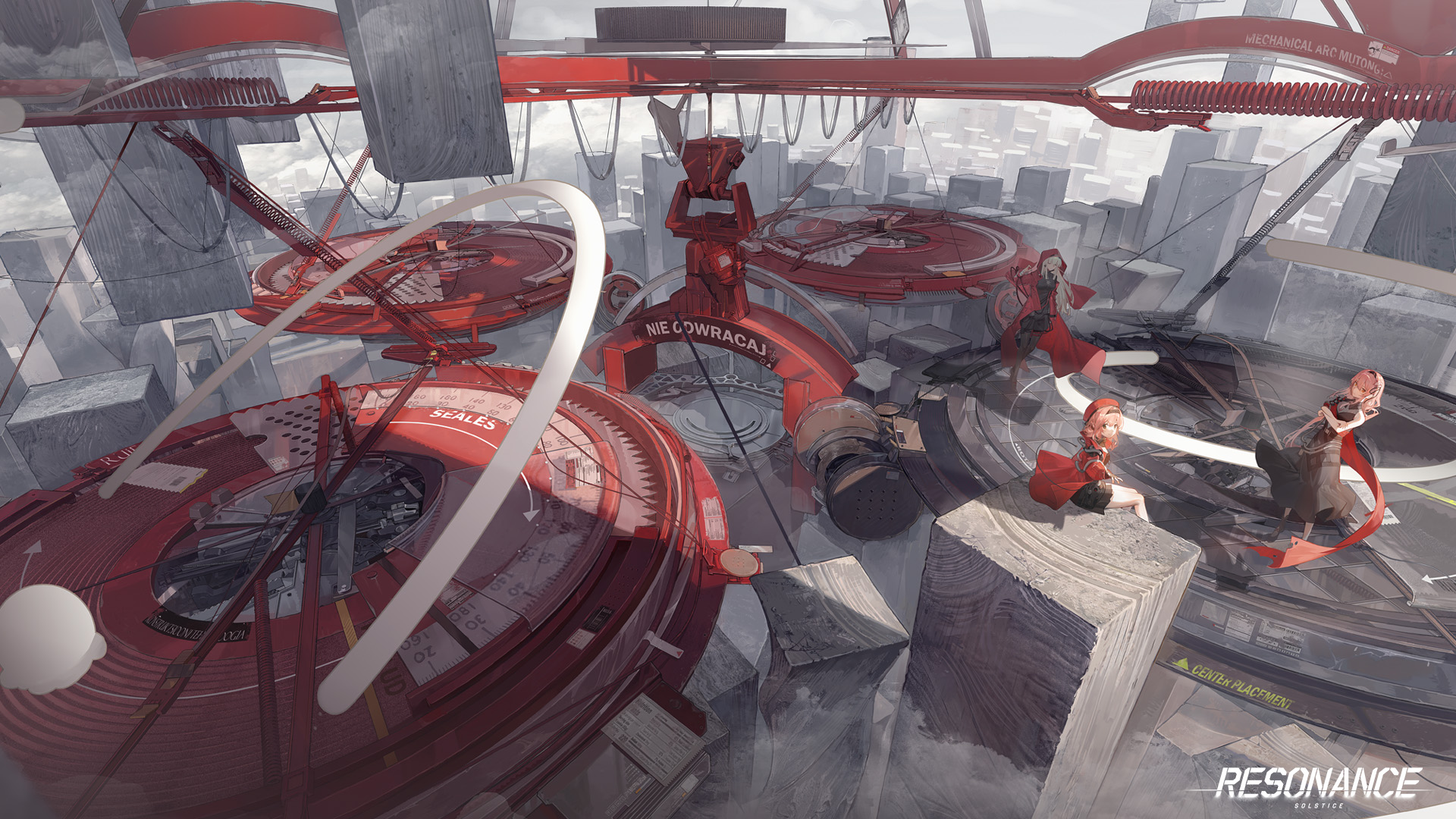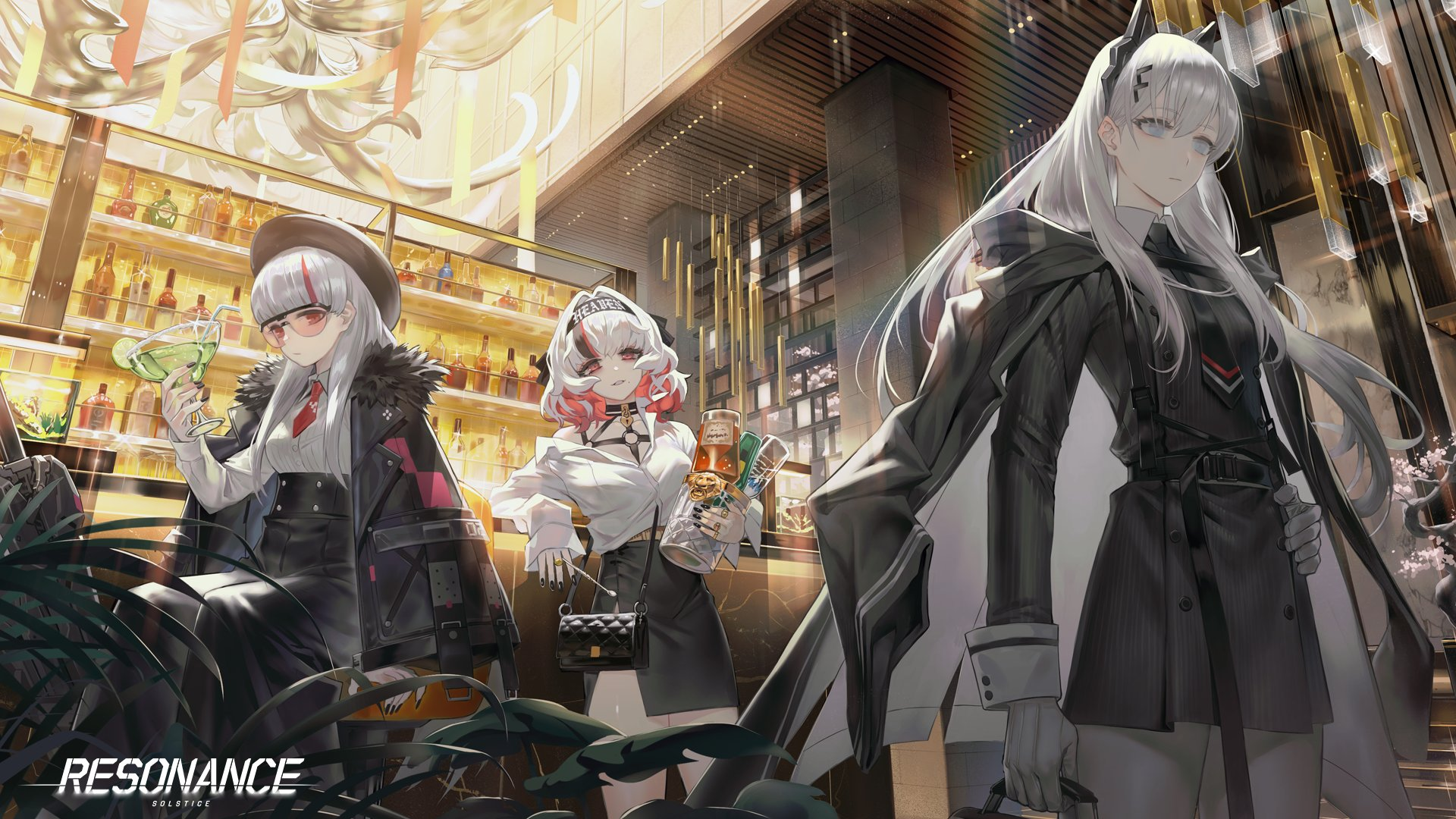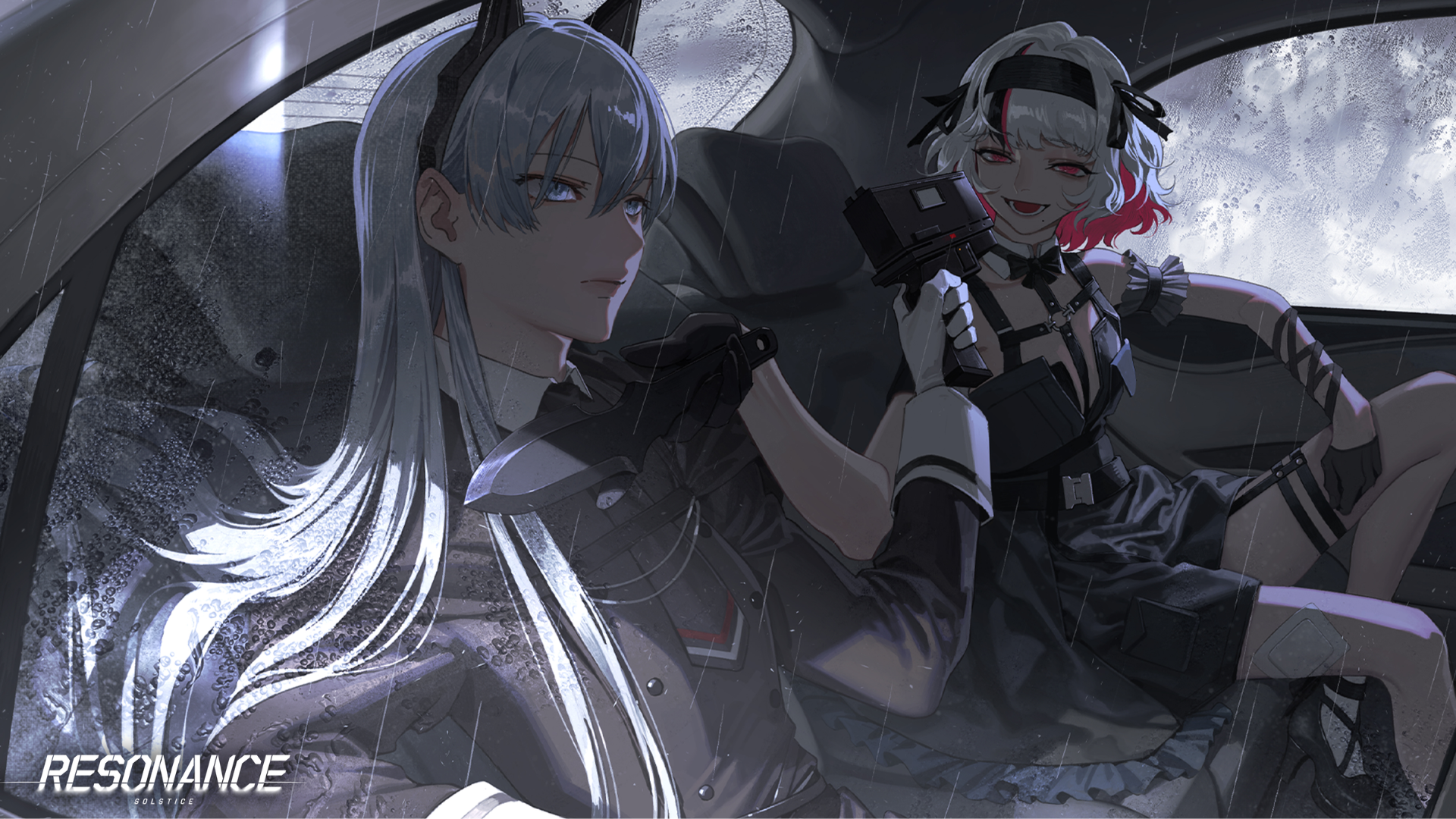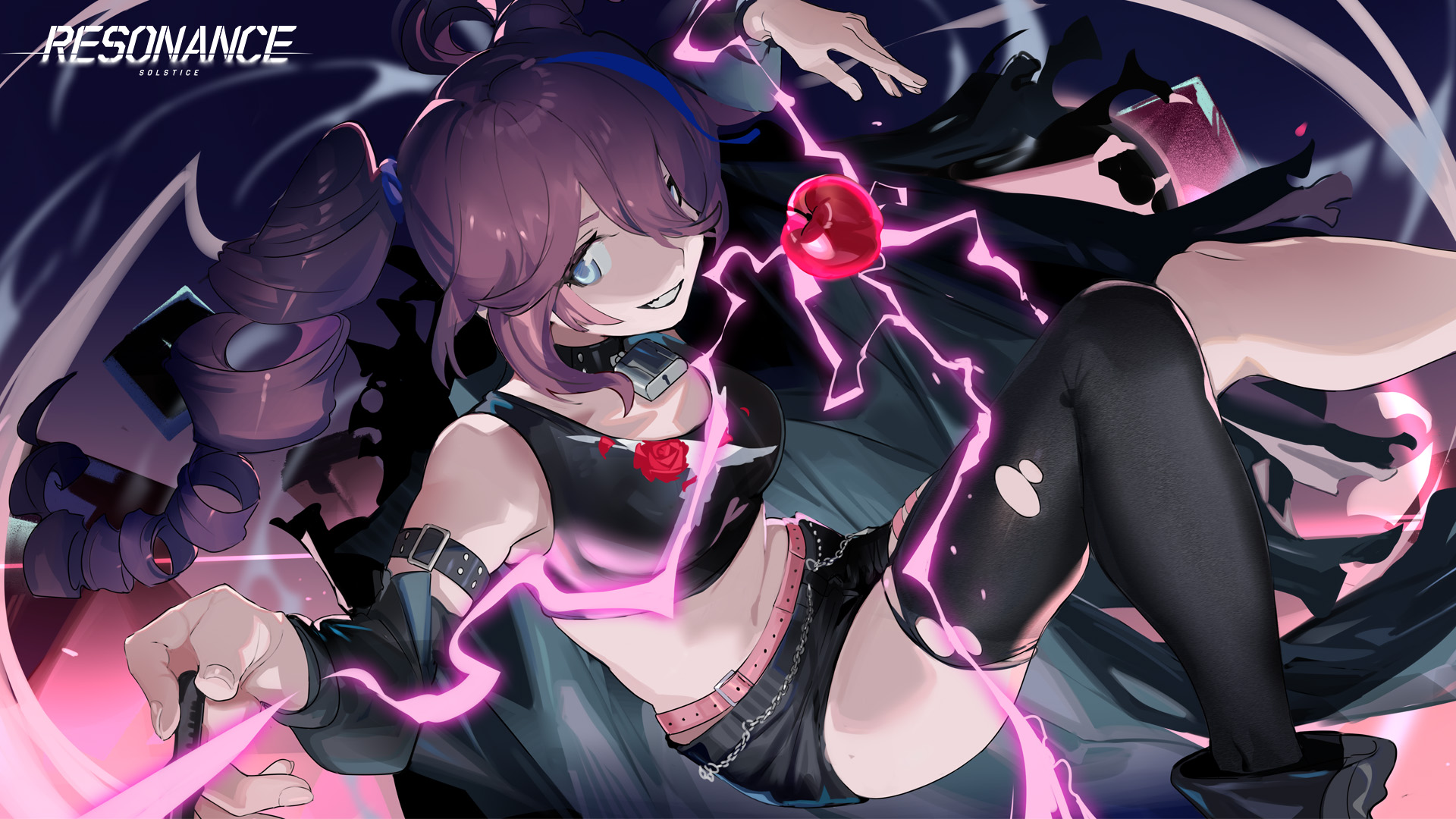Resonance Solstice vs Other Gacha Titles: What Makes It Unique
In an oversaturated mobile gaming market where most gacha RPGs recycle similar formulas of character collection and auto-battle progression, Resonance Solstice stands out as “genuinely the most UNIQUE new” title through its unprecedented fusion of train simulation, real-time trading economics, and strategic card combat. While competitors like Genshin Impact, Arknights, and Girls’ Frontline have established dominant positions through open-world exploration, tower defense, or tactical gameplay respectively, Resonance Solstice carves an entirely distinct niche by positioning economic management and resource trading as equally important as character battles. This comprehensive analysis examines the core differentiators separating Resonance Solstice from mainstream gacha conventions, comparing its systems against genre leaders, and explaining why “anime RPG, but with trains” represents more than mere marketing gimmick.
The Train Simulation Core: Unprecedented in Gacha Gaming
Mobile Base as Central Gameplay Loop
Unlike traditional gacha games where bases serve as static menus for team management, your COLUMBA train functions as a living, customizable mobile headquarters that evolves throughout gameplay. Every train component, from cargo cars expanding storage capacity to reactor units improving energy recovery, directly impacts combat readiness, trading capacity, and exploration range.
This fundamental design transforms train management into core gameplay rather than superficial theming. Players spend significant time optimizing train layouts, assigning crew to compartments for stat bonuses, and preparing defensive loadouts before departing on dangerous trade routes.
Travel as Gameplay Rather Than Menu Navigation
Resonance Solstice treats movement between locations as active gameplay rather than instant fast-travel or loading screens. During transit, players:
- Manually collect trackside cargo boxes and resources appearing along routes
- Respond to ambush events requiring real-time combat
- Monitor pollution levels threatening train integrity
- Engage with passengers providing story vignettes and side quests
One Reddit user aptly described the experience as “gacha Death Stranding with a turn-based card battle system”, referencing Kojima’s delivery-focused exploration game. This comparison highlights how journey becomes as important as destination.
Real-Time Trading Economics: Business Simulation Depth
Dynamic Market System vs Static Vendors
While most gacha games feature simple shops selling fixed items at unchanging prices, Resonance Solstice implements real-time fluctuating markets where supply and demand shift based on player trading activity and timed events.
Comparison to Genre Standards:
Traditional Gacha Shop Systems: Players purchase materials using premium or farmable currency at fixed exchange rates. Prices never change regardless of market conditions.
Resonance Solstice Trading: Buy low in production cities, sell high in consumption centers. Mineral Alloys purchased cheaply at industrial hubs sell for 200-300% profit margins in agricultural settlements lacking manufacturing. Market intelligence becomes strategic asset, knowing which cities currently pay premium prices for specific goods creates competitive advantage.
Trade Route Optimization as Endgame Content
Experienced players describe gameplay as “riding the train from point a to b doing all your daily missions at each station and min/maxing your materials”. This economic optimization loop differentiates Resonance Solstice from combat-focused competitors where endgame revolves around increasing damage numbers rather than resource circulation efficiency.
The trading simulation draws comparisons to classic PC games like Uncharted Waters, Port Royale, and The Patrician—beloved strategy titles focusing on trade, exploration, and management. Bringing these mechanics into anime gacha format creates hybrid appeal attracting both strategy enthusiasts and character collectors.
Card-Based Real-Time Combat: Strategic Depth
Hybrid System Bridging Turn-Based and Action Genres
Resonance Solstice’s real-time card battles combine strategic deck-building with action game reflexes. Unlike pure turn-based games (Girls’ Frontline, Arknights) or full action titles (Genshin Impact, Honkai Impact 3rd), this hybrid approach demands:
- Strategic Planning: Constructing synergistic five-character decks with balanced role coverage
- Real-Time Decision Making: Deploying cards mid-combat based on evolving battlefield conditions
- Energy Management: Balancing low-cost spam versus high-impact expensive cards
- Combo Execution: Chaining color-matched cards for resonance bonuses
One community member praised the complexity: “The gameplay is both intricate and engaging, offering a high level of complexity”. However, critics counter that combat appears cluttered with excessive visual effects making battlefield awareness challenging.
Leader Skill System Creating Build Diversity
The unique leader mechanic transforms one character’s ultimate into a cooldown-based ability that activates without consuming energy under specific conditions. This system creates dramatically different playstyles:
Nayuta (Card Draw Leader): Triggers after drawing 10 cards, shuffling hand and generating free 0-cost support cards, enables infinite combo cycling for experienced players.
Ilona (Aggro Leader): Activates during consecutive attack chains, boosting damage and granting immunity after 5 strikes, rewards aggressive face-rushing strategies.
Joshua (Tank Leader): Creates barriers based on survival duration, encourages defensive attrition warfare.
No other mainstream gacha features comparable leader-dependent gameplay variance, where selecting different team captains fundamentally alters combat flow and strategy.
Presentation: Chibi Aesthetic vs Modern Standards
The Polarizing Art Direction
Resonance Solstice’s chibi character style provokes the most divisive reactions. Critics argue the game “looks 8 years late” compared to modern 3D action standards set by Zenless Zone Zero and Wuthering Waves.
Visual Comparison:
However, defenders draw favorable comparisons to Girls’ Frontline, a beloved tactical RPG that built devoted fanbase despite aging visuals through deep gameplay and strong character writing. One veteran player emphasized: “Don’t let that mislead you. Once you dive into the game, you’ll realize it’s genuinely enjoyable”.
Production Value Through Audio Rather Than Graphics
While visual presentation lags cutting-edge competitors, Resonance Solstice invests heavily in audio production. Legendary composer Hiroyuki Sawano (Attack on Titan, Mobile Suit Gundam Unicorn) created the soundtrack alongside KOHTA YAMAMOTO, while the game features all-star Japanese voice cast including Mizuki Nana, Kugimiya Rie, and Sugita Tomokazu.
This audio-focused investment strategy differentiates Resonance Solstice from graphically-prioritized competitors, appealing to players who value narrative immersion and musical atmosphere over polygon counts.
Narrative Structure and Progression Pacing
Streamlined Story Delivery
Beta testers praised how “the narrative is very well presented, and you don’t have to go through tons of notifications and menus to get to the action”. This contrasts sharply with many modern gacha games (Nikke, Reverse: 1999, Limbus Company) featuring lengthy visual novel sections between gameplay segments.
Story Integration Comparison:
Genshin Impact: Open-world exploration with optional dialogue and cutscenes. Players can ignore story completely if desired.
Arknights: Dense text-heavy story requiring significant reading commitment. Story stages separate from gameplay stages.
Resonance Solstice: Story integrates naturally with train travel, presenting narrative through passenger interactions and city discoveries rather than interrupting gameplay flow.
Monetization: F2P Viability Compared to Competitors
Generous Premium Currency Generation
Resonance Solstice provides multiple revenue streams for free-to-play players:
- Trading Profits: Successful resource arbitrage generates Gold convertible to premium pulls
- City Development: Contributing to city growth unlocks collective rewards
- Daily Missions: Consistent crystal generation through routine task completion
- Event Participation: Limited-time celebrations providing bulk recruitment tickets
Early impressions suggest comparable or better F2P generosity than Arknights, which community consensus considers one of the most F2P-friendly gacha titles. The emphasis on trading means “the best upgrades (and potentially SSR heroes) require significant trading and resource management…slow but rewarding for F2P players”.
Battle Pass and Monetization Approach
Battle passes include skins, materials, and pulls, with recommendations to purchase only base tier since premium tiers offer diminishing returns. This contrasts with aggressive monetization seen in recent gacha launches where games copy “hoyo monetization and being even stingier than Genshin”.
Time Investment: Casual vs Hardcore Accessibility
Daily Commitment Comparison
The lack of auto-collection for trackside items creates mandatory active engagement, though purchasable QoL packs add automation. This design choice prioritizes engagement over convenience—a philosophy aligning with Arknights‘ “busier players” approach rather than GFL‘s “lots of time to play” model.
Unique Selling Propositions Summary
What Resonance Solstice Does That No Other Gacha Offers:
- Train simulation integrated as core progression system
- Real-time trading with fluctuating market economics
- Journey-focused gameplay where travel matters
- Hybrid card-action combat with leader skill variance
- Economic optimization as viable endgame alongside combat
What It Shares With Successful Competitors:
- Gacha character collection (standard across genre)
- Team synergy and composition depth (similar to Arknights, GFL)
- Event rotation and limited content (industry standard)
- Premium currency generation for F2P (comparable to Arknights)
Target Audience: Who Should Play Resonance Solstice?
Ideal Players:
- Fans of Girls’ Frontline, Uncharted Waters, classic PC trade sims
- Strategy enthusiasts valuing management depth over graphics
- Players seeking “genuinely unique” experiences rather than genre refinements
- Train/railway enthusiasts (obviously)
Poor Fit For:
- Graphics-focused players expecting Zenless Zone Zero visual fidelity
- Action combat enthusiasts seeking Genshin Impact real-time gameplay
- Casual players wanting full auto-battle convenience
- Those dismissive of chibi aesthetics
Ultimately, Resonance Solstice succeeds not by competing directly with Genshin Impact or Honkai: Star Rail but by offering fundamentally different gameplay that appeals to underserved niches within the gacha ecosystem. As one veteran player summarized: “Once you dive into the game, you’ll realize it’s genuinely enjoyable,” if you give it a chance beyond surface-level impressions.



